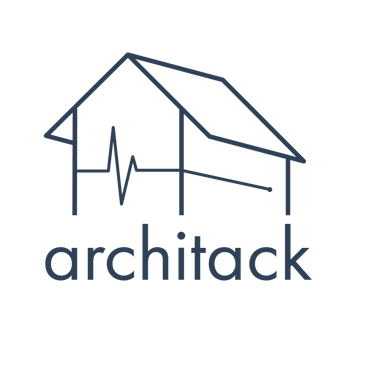What Architects Can Learn from Tech Startups
Benjamin Smith
10/20/20253 min read


Rethinking How We Work
As technology reshapes every corner of the design world, it’s not just about adopting new tools — it’s about changing how we work. Startups have long perfected this: light, fast, flexible workflows that adapt daily.
Architecture, meanwhile, often feels locked in a rhythm of “design → document → panic → deliver.”
But what if we started to think — and work — a little more like startups?
The lessons aren’t just for Silicon Valley. They can help us streamline our processes, shorten feedback loops, and spend more time designing instead of chasing revisions.
The ironic park is Architects spend their lives designing innovation hubs — yet often work in the least innovative way possible. Maybe it’s time we stopped drawing incubators and started acting like one.
1. Think “Minimal Viable Design”
Startups talk about MVPs — Minimum Viable Products. The idea is simple: launch early, get feedback, improve. As Eric Ries put it in The Lean Startup:
“The only way to win is to learn faster than anyone else.”
In architecture, a Minimal Viable Design could be a massing model, a rough Enscape shot, or even a quick AI render — just enough to communicate the idea. The goal isn’t perfection; it’s progress.
Get something on the table early and adjust before the detailing stage eats your week (and your will to live).
2. Iterate Like You Mean It
Startups live and die by iteration. Each “sprint” tests assumptions, measures results, and adjusts course — not six months later, but next week.
As Harvard Business Review put it:
“Agile organizations don’t just work faster. They learn faster.”
In architectural terms, that could mean revising design options more frequently using AI tools like Veras or Nano-Banana, rather than waiting for a full render. Faster cycles = faster decisions = fewer all-nighters.
And honestly, “let’s iterate that” sounds a lot more hopeful than “we’ll have to start again.”
3. Shrink Your Feedback Loops
In startups, feedback is gold — the quicker you get it, the less you waste.
A ScienceDirect study on agile teams found that shortening feedback loops was one of the strongest predictors of project success.
In architecture, this means looping in clients, consultants, and visualizers early — not at the “final presentation” when it’s too late to pivot. Show roughs. Test ideas. Invite reaction. It’s less dramatic, but a lot more productive than the dreaded “we love it, but can we change everything?”
4. Stay Agile When Clients Change Their Mind (Again)
Agile thinking embraces uncertainty — because in startups, everything is uncertain.
In architecture, that’s Tuesday.
When client briefs, budgets, or site data shift mid-project, staying “architecturally agile” (yes, that’s a real term) is essential.
As PA Consulting wrote in their Agile Architecture paper:
“Flexibility is the foundation of future resilience.”
Treat every project as a system that evolves — not a frozen sculpture that cracks when the wind changes.
5. Experiment, Don’t Overthink
Tech startups run experiments constantly — “Let’s tweak this button and see what happens.”
Architects can take the same mindset:
“What if we used AI to test ten façade options today instead of one?”
As researchers in the International Journal of Entrepreneurial Behavior & Research put it:
“Startups succeed not by predicting the future, but by running experiments that reveal it.”
Try small, measurable experiments in your workflow — and let data (or at least time saved) be your feedback.
6. Flatten the Studio Hierarchy
Startups thrive in small, cross-functional teams. Everyone has a voice; no one hides behind job titles. It’s the same reason Zaha Hadid Architects adopted AI workflows — their teams needed real-time collaboration between design and tech to generate competition visuals faster.
An Enterprise League feature on architecture startups summed it up perfectly:
“The future of architecture will look less like a firm, and more like a startup — flexible, tech-driven, and always in beta.”
So maybe the next time your intern suggests using AI to test lighting options, listen — they might be your design team’s secret productivity hack.
Closing Thoughts
You don’t have to turn your studio into a tech startup — no one’s suggesting you install beanbags or start wearing Patagonia vests.
But borrowing a few startup principles can make your practice leaner, faster, and less reactive.
The goal isn’t disruption for the sake of it — it’s about freeing up headspace for the work that actually matters: design.
And if AI tools can automate some of the grind (emails, reports, visuals), all the better. That’s the essence of architectural agility — creative brains focusing on creative problems.
Sources & Acknowledgements
Ries, Eric. The Lean Startup. Crown Business, 2011.
Rigby, Darrell K., et al. “Embracing Agile.” Harvard Business Review, 2016.
Klotins, E., Unterkalmsteiner, M., et al. “Use of Agile Practices in Start-ups.” arXiv, 2024.
“Agile Architecture: Building the Foundations for an Adaptable Digital Organisation.” PA Consulting, 2024.
“Lean Startup, Agile Methodologies and Customer Development.” International Journal of Entrepreneurial Behavior & Research, 2020.
“Architecture Startups: The Future of the Built Environment.” Enterprise League, 2023.
“Zaha Hadid Architects Uses AI to Create Winning Proposals.” The Times (UK), 2024.
